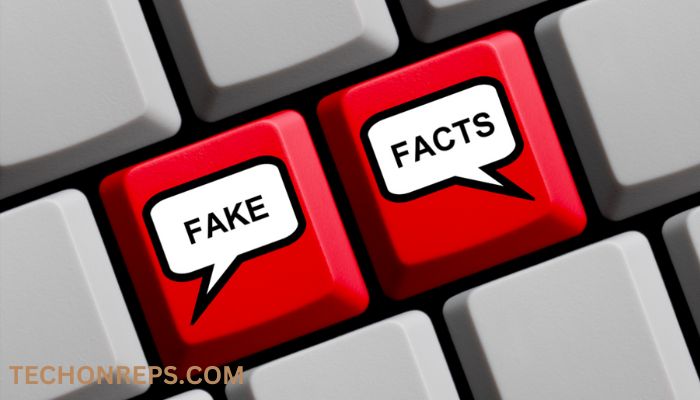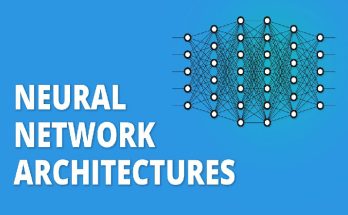Which of the Following Is True of Internet Hoaxes: Truth or Trickery
Internet hoaxes have become a prevalent issue in today’s digital age. With the rise of social media and the ease of sharing information online, hoaxes can quickly spread and deceive a large number of people. It is important for individuals to be able to spot and debunk these hoaxes in order to prevent the spread of misinformation and protect themselves from potential harm.
The Rise of Internet Hoaxes: A Growing Problem
In recent years, there have been numerous examples of internet hoaxes that have gone viral. One such example is the “Momo Challenge,” which claimed that a creepy character named Momo was encouraging children to engage in dangerous activities. This hoax spread rapidly on social media, causing panic among parents and leading to widespread concern. Another example is the “Blue Whale Challenge,” which falsely claimed that participants were being coerced into completing a series of dangerous tasks, ultimately leading to self-harm or suicide.
Statistics show that internet hoaxes are becoming increasingly common. According to a study conducted by the Pew Research Center, 64% of Americans have encountered fake news online, with 23% saying they have shared it either knowingly or unknowingly. This highlights the need for individuals to be able to identify and debunk hoaxes in order to prevent the spread of misinformation.
The Psychology Behind Internet Hoaxes: Why Do People Fall for Them?
There are several cognitive biases that make people susceptible to falling for internet hoaxes. One such bias is confirmation bias, which is the tendency to interpret information in a way that confirms one’s preexisting beliefs or assumptions. This can lead individuals to believe and share hoaxes that align with their existing worldview.
Another cognitive bias is the availability heuristic, which is the tendency to rely on immediate examples that come to mind when making judgments or decisions. When individuals encounter an internet hoax, they may recall similar stories or incidents that they have heard about in the past, leading them to believe that the hoax is true.
In addition to cognitive biases, internet hoaxes often appeal to people’s emotions. They may play on fears, anxieties, or desires, making them more likely to be believed and shared. For example, hoaxes that claim to offer a quick and easy solution to a problem or promise a large reward can be particularly enticing.
The Consequences of Believing Internet Hoaxes: Real-Life Examples
Believing internet hoaxes can have real-world consequences. In some cases, individuals may suffer financial loss or damage to their reputations. For example, there have been instances where people have fallen for investment scams or false advertising campaigns, resulting in significant financial losses.
In other cases, believing hoaxes can lead to physical harm or even death. For example, there have been instances where people have followed dangerous medical advice found online, resulting in serious health complications or fatalities. Additionally, hoaxes that spread false information about public health issues, such as vaccines or COVID-19, can have serious consequences for public health and safety.
The Anatomy of an Internet Hoax: How They Spread and Why They Work
Internet hoaxes are often created with the intention of going viral and spreading quickly. They are typically designed to be attention-grabbing and shareable, using sensationalist headlines or provocative content to attract attention. Once a hoax gains traction, it can spread rapidly through social media platforms, email chains, or messaging apps.
There are several factors that contribute to the success of internet hoaxes. One factor is the speed at which information can be shared online. With just a few clicks, a hoax can reach thousands or even millions of people within minutes. Additionally, the anonymity of the internet allows hoaxes to be created and shared without fear of consequences, making it easier for them to gain traction.
Another factor is the lack of critical thinking and skepticism among internet users. Many people are quick to believe and share information without verifying its accuracy, especially if it aligns with their existing beliefs or emotions. This lack of critical thinking allows hoaxes to spread unchecked and can contribute to their success.
The Role of Social Media in Spreading Internet Hoaxes
Social media platforms play a significant role in the spread of internet hoaxes. These platforms are designed to encourage sharing and engagement, making it easy for hoaxes to go viral. The algorithms used by social media platforms also contribute to the spread of hoaxes, as they prioritize content that is likely to generate a high level of engagement, regardless of its accuracy.
Social media companies have a responsibility to combat the spread of hoaxes on their platforms. This includes implementing measures to detect and remove false or misleading content, as well as providing users with tools and resources to verify information before sharing it. However, there is ongoing debate about the extent of this responsibility and the potential impact on freedom of speech.
How to Spot an Internet Hoax: Red Flags to Look Out For
There are several red flags that can indicate that a piece of information may be an internet hoax. One red flag is sensationalist or exaggerated language. Hoaxes often use dramatic or attention-grabbing headlines to attract clicks and shares. If a headline seems too good (or bad) to be true, it may be a hoax.

Another red flag is the lack of credible sources or evidence. Hoaxes often rely on anonymous or unverified sources, making it difficult to verify the accuracy of the information. If a piece of information does not cite credible sources or provide evidence to support its claims, it should be approached with skepticism.
Additionally, hoaxes often play on emotions or appeal to personal beliefs. If a piece of information seems designed to provoke a strong emotional response or aligns with preexisting beliefs, it may be a hoax. It is important to approach such information with critical thinking and verify its accuracy before sharing it.
Debunking Internet Hoaxes: Tools and Resources to Verify Information
There are several tools and resources available to help individuals verify the accuracy of information before sharing it. Fact-checking websites, such as Snopes or FactCheck.org, provide comprehensive analyses of popular hoaxes and misinformation. These websites often cite credible sources and provide evidence to support their findings.
In addition to fact-checking websites, there are also browser extensions and plugins that can help identify and flag potentially false or misleading information. These tools use algorithms to analyze the credibility of sources and provide warnings when a piece of information may be unreliable.
It is important to take the time to verify information before sharing it, especially if it seems sensational or controversial. By doing so, individuals can help prevent the spread of hoaxes and misinformation and contribute to a more informed and responsible online community.
The Ethics of Creating and Sharing Internet Hoaxes: Is it Ever Justified?
The creation and sharing of internet hoaxes raise ethical considerations. While some may argue that hoaxes can be justified in certain situations, such as raising awareness about an important issue or exposing corruption, the potential harm caused by hoaxes often outweighs any potential benefits.
Creating and sharing hoaxes can have serious consequences for individuals and society as a whole. It can lead to panic, fear, and mistrust, and can damage the credibility of legitimate sources of information. Additionally, hoaxes can have real-world consequences, such as financial loss or physical harm.
It is important for individuals to consider the potential impact of their actions before creating or sharing hoaxes. By doing so, they can help prevent the spread of misinformation and contribute to a more responsible and trustworthy online environment.
The Importance of Critical Thinking in the Age of Internet Hoaxes
In today’s digital age, critical thinking skills are more important than ever. With the prevalence of internet hoaxes and misinformation, individuals need to be able to evaluate information critically and make informed decisions.
Critical thinking involves questioning and analyzing information, considering multiple perspectives, and verifying the accuracy of claims. It requires individuals to be skeptical and to seek out credible sources of information. By developing critical thinking skills, individuals can protect themselves from falling for hoaxes and contribute to a more informed and responsible online community.
Fighting Back Against Internet Hoaxes: What Can We Do to Stop Them?
Fighting back against internet hoaxes requires a collective effort from individuals, social media companies, and governments. Individuals can play a role by being vigilant and responsible when sharing information online. They should take the time to verify information before sharing it and should be skeptical of sensationalist or controversial claims.
Social media companies have a responsibility to combat the spread of hoaxes on their platforms. This includes implementing measures to detect and remove false or misleading content, as well as providing users with tools and resources to verify information before sharing it. Additionally, social media companies should prioritize the promotion of credible sources and fact-checking organizations.
Governments can also play a role in combating internet hoaxes by implementing regulations and policies that hold individuals and organizations accountable for spreading false or misleading information. This can include penalties for creating or sharing hoaxes, as well as initiatives to promote media literacy and critical thinking skills.
Conclusion
Internet hoaxes are a prevalent issue in today’s digital age, with the potential to cause harm and spread misinformation. It is important for individuals to be able to spot and debunk hoaxes in order to protect themselves and prevent the spread of misinformation. By being vigilant, verifying information before sharing it, and developing critical thinking skills, individuals can contribute to a more informed and responsible online community. It is also important for social media companies and governments to take action to combat the spread of hoaxes and promote media literacy. Together, we can fight back against internet hoaxes and create a more trustworthy and responsible online environment.



